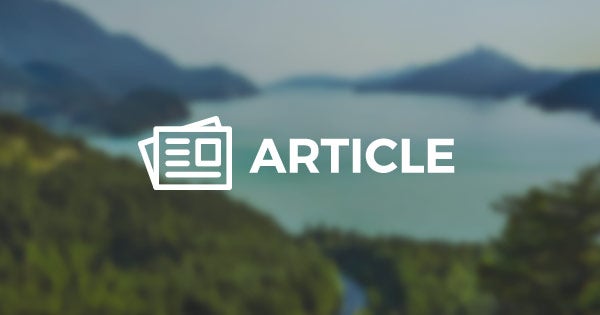Canoe Hull Shape Defined
After the raw dimensions of length, width and depth, canoe performance is determined by hull shape. Front, side and overhead views of the boat give you cross-section, rocker, hull symmetry and taper.
Cross-section-Initial and Secondary Stability
The cross-sectional shape of the bottom and sides of the canoe will influence its performance, especially its stability. Stability is divided into initial (primary) and final (secondary). Initial stability is what you feel when you first get into the boat. In a boat with great initial stability, you can stand up and walk around. It takes a lot of effort to flip this boat on flatwater. It resists leaning until it reaches a point of no return, beyond which it quickly upsets without much warning. That's because secondary stability was sacrificed for the stable platform of initial stability. Secondary stability refers to how the boat behaves as it tilts. A boat with great secondary stability may feel tippy at first-it's easy to lean onto its side. But it feels stable and predictable in the lean. This is a useful characteristic for whitewater moves and rough-water paddling.
Flat-bottomed canoes offer great initial stability at the expense of speed and rough-water performance. Very secure on calm water, they're great for sportsmen and recreational paddlers. Round-bottomed boats are the other end of the spectrum. Perfectly rounded bottoms allow for clean entry and exit lines and minimal surface area in the water. They have great speed and efficiency but virtually no initial stability. This is why racing rowing shells are round-bottomed but canoes, except for a few fast, specialized designs, usually are not. Most canoe designs are a compromise between flat and round, with shallow-arch or shallow-V bottoms. These designs sacrifice varying degrees of initial stability for good secondary stability and all-around performance. The cross-section of some canoes is modified by the addition of a keel. A keel is a moulded ridge or attached piece of material that runs the length of the canoe on the bottom outside of the boat to help the canoe track and resist the influence of crosswinds. Keels are most often found on short, wide canoes used for recreation and sporting. They are undesirable in whitewater because they reduce manoeuvrability and are vulnerable to rocks.
The sides of the canoe are either flared, turned-in or straight. Flared sides shed water. Tumblehome describes the shape of a canoe with turned-in sides. Tumblehome results in a narrower beam at the gunwales making it easier for the paddler to reach over the side of the canoe when paddling. Straight-sided canoes are a balance between the paddling efficiency of tumblehome and the dryness of flare. Canoe designs will incorporate one, two, or all three of these in different areas of the hull.
~Get the BWCAW Tee~
With over 1,090,000 acres of wilderness area, the BWCAW is a paddler's paradise.
Rocker-Tracking vs. Manoeuvrability
Viewed from the side, the amount that the canoe's keel line (the bottom profile of the canoe) curves upward toward bow and stern is termed rocker. The amount of rocker determines how easily a boat turns versus how well it tracks. A straight keel line (no rocker) allows for exceptional tracking, ideal for covering long distances in a straight line. A canoe with a lot of rocker offers exceptional manoeuvrability.
Hull Symmetry and Taper
Viewed from above, symmetrical canoes have identical bow and stern ends with the widest point at the centre of the hull. This design offers more versatility because it can be paddled as a tandem or a solo canoe. Asymmetrical canoes typically have the widest section behind the centre of the boat creating a longer bow. This configuration produces enhanced forward speed and tracking and is often seen in touring and performance boat designs. Touring and performance boats will also have sharper, more knife-like tapers at the bow and stern to cut through the water efficiently. Whitewater and general-purpose boats will have blunter ends to add volume and give buoyancy in waves, providing a drier ride.
Reprinted with permission from Canoeroots Magazine volume 2, 2003.
Canoeroots was developed to help people get into canoes more often. Along with that, it is filled with incredible wilderness photography, biographies, product reviews, helpful hints and techniques. Read full issues online atwww.canoeroots.com.

Related Articles
Ken Whiting answers the big question for new paddlers - Do you go for a canoe, a kayak, or a stand up…
By changing how you edge and balance your boat you can increase your stability and adaptability. Using…
Learn the full glossary of canoe terminology in this excerpt from The Complete Book of Canoeing by I.…
In this video, we're going to look at five kayaking tips that will make you a better paddler or at least…




